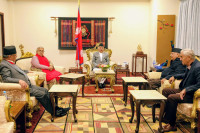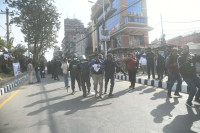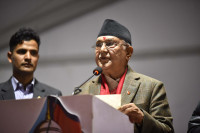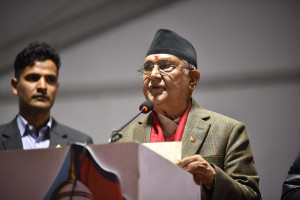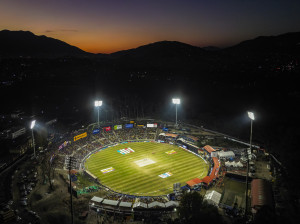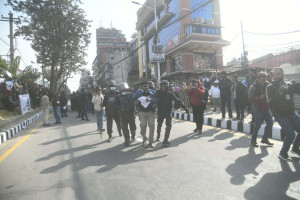Editorial
Missing grounds
Unless Nepal has good cricket grounds and training facilities, its international success will remain patchy.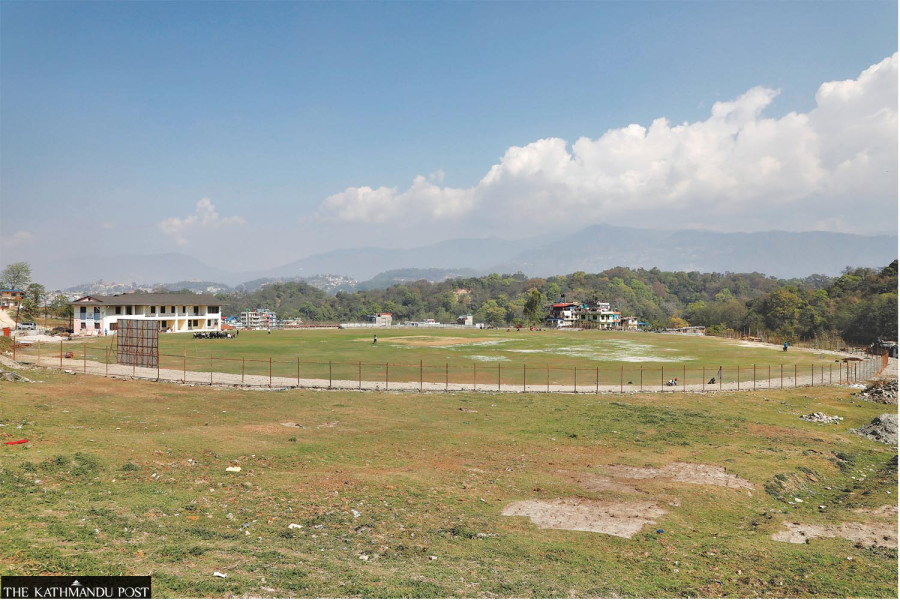
A Nepali cricket team wins a big international tournament. The government fetes its members with cash prizes and other perks. It declares a new push to develop good cricket infrastructure and vows to clean up the traditionally corrupt cricket bureaucracy. These developments and declarations make for great headlines. But then a fortnight later, top state officials conveniently forget their promises and get back to their daily business of political mud-slighing. If the Nepali state was serious about development of the beautiful ground, the country should by now have had at least three international standard cricket stadiums. Right now, it does not have a single one. No, the Tribhuvan University cricket ground, the venue for the dream final on May 2, when Nepal beat the UAE to advance to the Asia Cup, does not even have proper seats, much less covered stands. Interestingly, it was Zee TV, an Indian broadcaster, that had first thought of the TU ground as a possible neutral venue for India-Pakistan cricket matches way back in 1992. The channel lost interest when the Maoist insurgency broke out in Nepal, whereupon it was deemed an unsafe venue. There is no reason a peace-time Nepal cannot revive that cherished dream of being a neutral venue for the two quarrelling states.
The idea for another proposed international ground, at Mulpani, germinated in 2002 when the International Cricket Council wanted to build a global cricket academy in Nepal. Should the Mulpani masterplan come to fruition, there will be a 30,000-seat cricket stadium built on the once dumping site on the outskirts of Kathmandu. Yet construction has dawdled on for years—just like the case with upgrade works on the TU ground. Pretty much the same fate has befallen another international cricket ground, the Gautam Buddha International Stadium in Bharatpur, being built at the personal initiative of the actor duo of Sitaram Kattel and Kunjana Ghimire. The two withdrew from the project in July 2021 after their failure to collect the necessary funds for the stadium—and seemingly no help from the state.
All these are clear signs of the state’s lack of commitment to developing the game at the grassroots and ensuring sustained success of the Nepali cricket teams in the international arena. Unless Nepal has good grounds where it can host top teams as well as proper training facilities for players, its international success will remain patchy. Moreover, a country where some kind of organised cricket has been played for over a century does not even have a proper first-class structure. Without that, the country will never be able to get the Test status, the pinnacle of international cricket.
Cricket is one glue that holds this diverse country together: the current roster of the ACC Premier Cup winning team, for instance, is a great reflection of Nepal’s rich ethnic diversity. Frustrated by the seemingly never-ending political instability and a constant slide in their economic fortunes, the Premier Cup victory was a rare occasion when all Nepalis got to celebrate as a country. The morale-boosting effect it has had on Nepali youngsters cannot be overstated. Thus the development of good cricket grounds, training facilities and first-class cricket is not just a matter of the country’s standing in international sports. It is also about strengthening national unity.




 13.12°C Kathmandu
13.12°C Kathmandu
